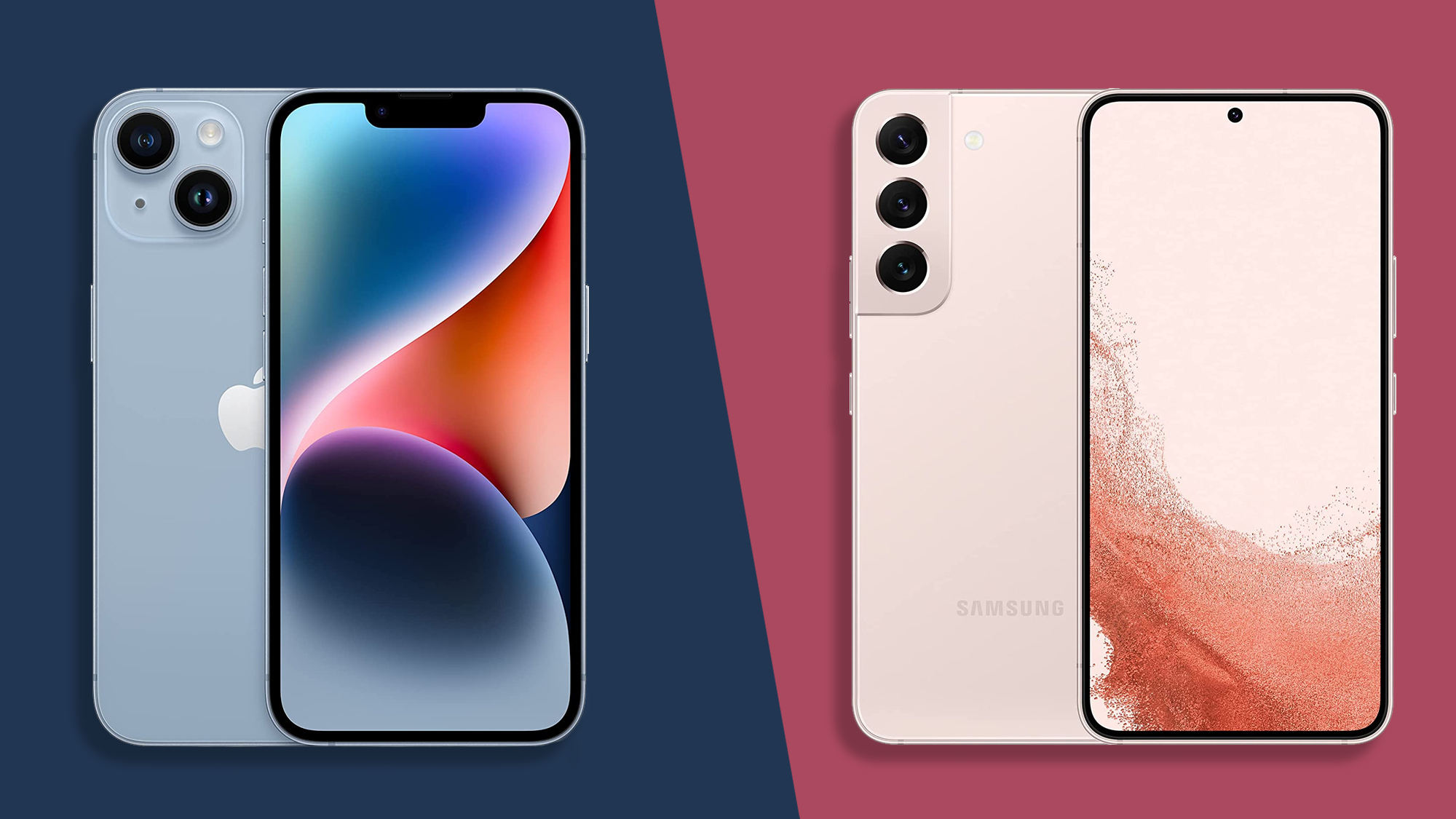
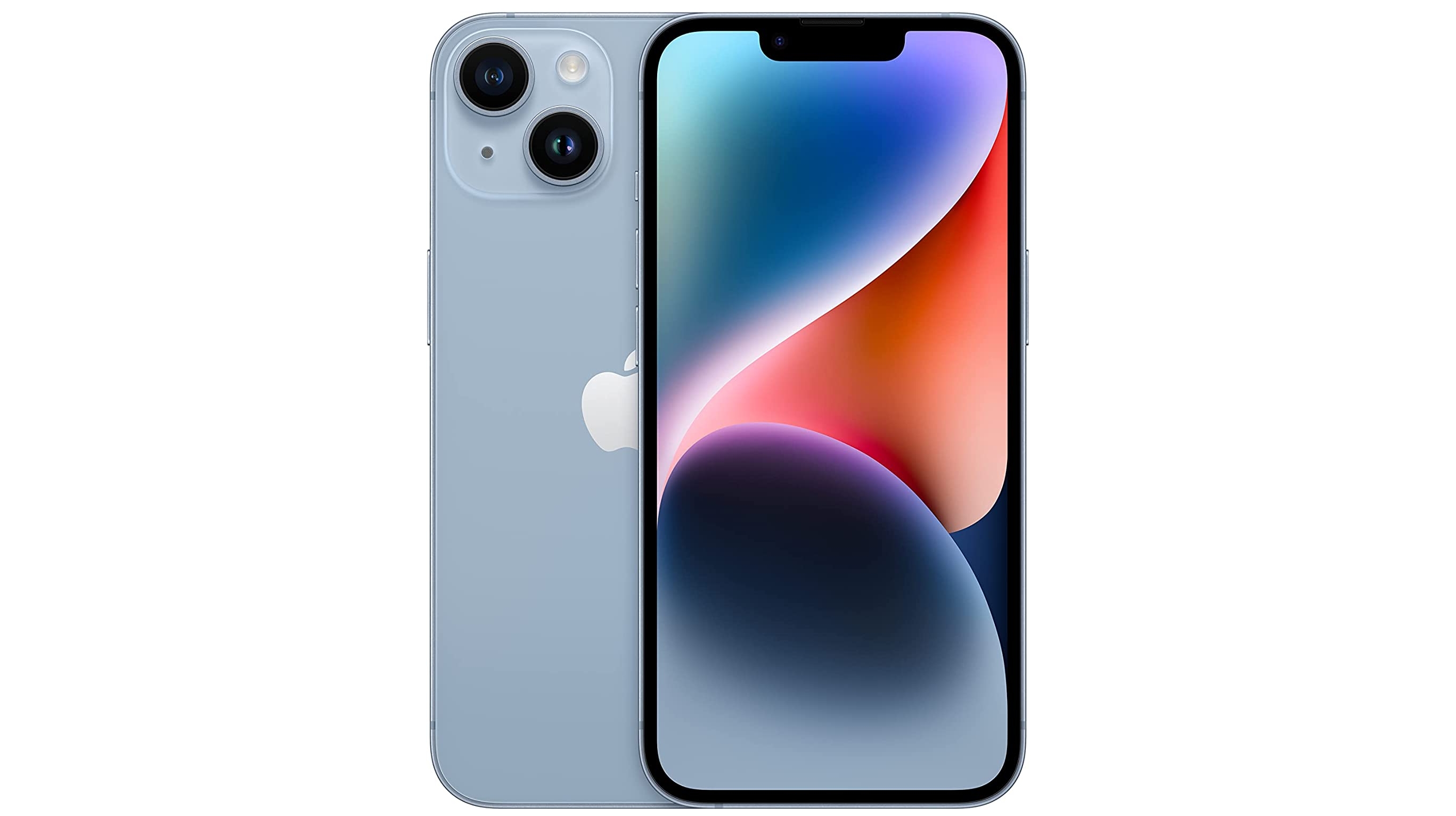
Weight: 172g
Dimensions: 146.7 x 71.5 x 7.8mm
Screen size: 6.1-inch
Resolution: 1170 x 2532
CPU: A15 Bionic (w/ four-core GPU)
RAM: 6GB
Storage: 128GB/256GB/512GB
Battery: 3,279mAh
Rear camera: 12MP+12MP
Front camera: 12MP
The iPhone 14 is a compact flagship, and while it's not a massive upgrade on the iPhone 13 it can still compete with the likes of the Samsung Galaxy S22.
It's powerful, has a strong main camera, and solid battery life, but its design is in some ways slightly dated, and it lacks a telephoto camera.
Pros
- Good cameras
- Very powerful
- Quality design and build
Cons
- The notch remains
- Last generation A15 Bionic chip
- No telephoto camera
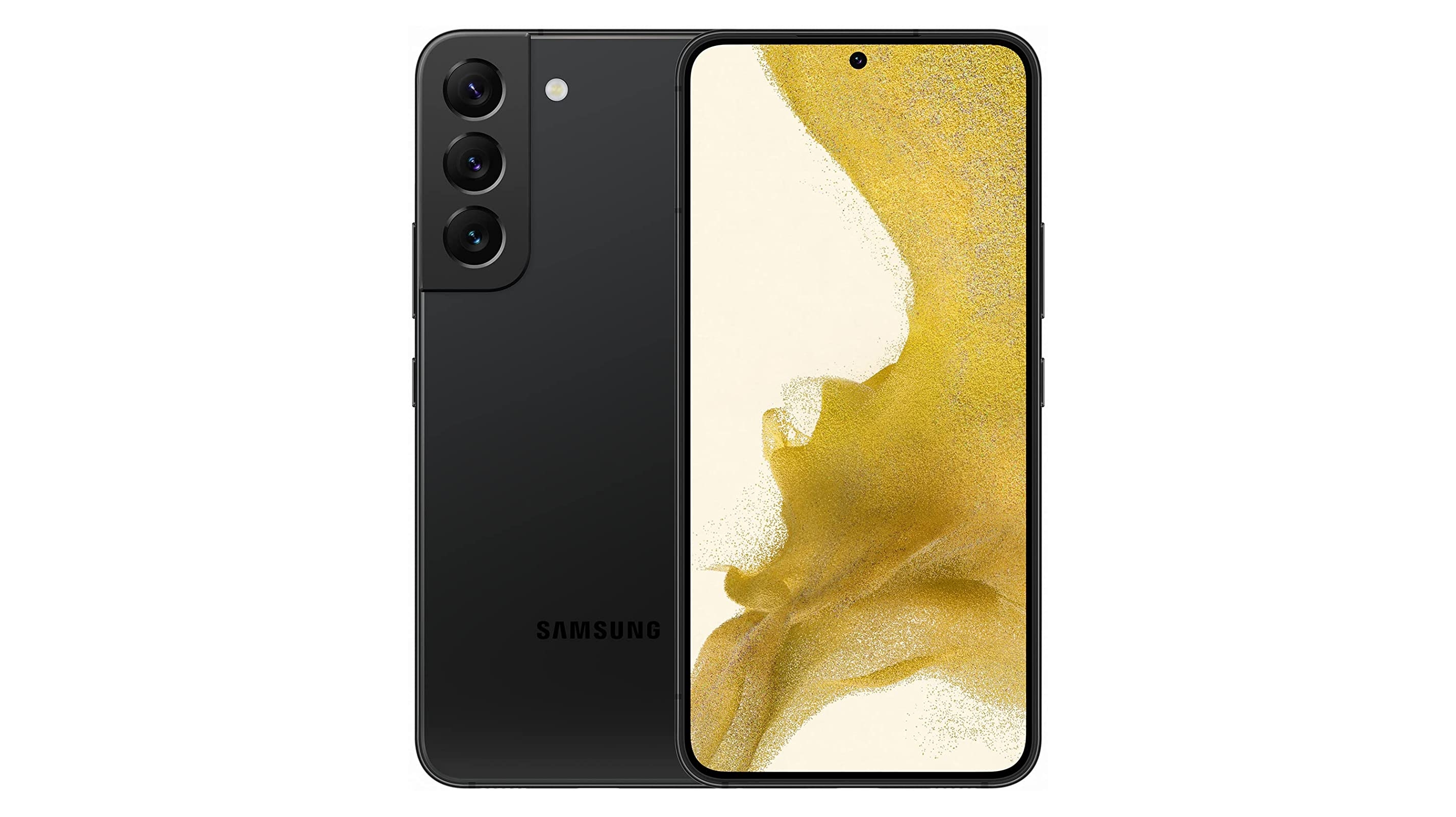
Weight: 167g
Dimensions: 146 x 70.6 x 7.6mm
Screen size: 6.1-inch
Resolution: 1080 x 2340
CPU: Snapdragon 8 Gen 1 / Exynos 2200
RAM: 8GB
Storage: 128GB/256GB
Battery: 3,700mAh
Rear camera: 50MP+10MP+12MP
Front camera: 10MP
The Samsung Galaxy S22 has the same size screen as the iPhone 14 but wins for refresh rate, has a more modern design, and benefits from an extra camera - namely a telephoto lens.
It doesn't do quite as well on some of the basics though, with worse stamina, fewer pixels, and less power, despite packing a newer chipset than Apple's phone.
Pros
- Great design with no notch
- Handy telephoto camera
- Excellent performance
Cons
- Less powerful than the iPhone
- Not a major update
- Screen is only 1080p
Each year, the biggest flagship phone sellers come from Apple and Samsung. Without fail.
In 2022, this translates to a straight face-off between the iPhone 14 and the Samsung Galaxy S22. So which is the better phone?
There are as many differences as there are common points between these two phones, and pitching them up against one another proves to be a fascinating exercise.
iPhone 14 vs Samsung Galaxy S22: price and availability
The iPhone 14 arrived on September 16, 2022. Prices start from $799 / £849 / AU$1,399 for the 128GB entry model, while 256GB costs $899 / £959 / AU$1,579, and 512GB will set you back $1,099 / £1,179 / AU$1,899.
The Samsung Galaxy S22 hit shops on February 25, 2022, in the US, then March 3 in Australia, and March 11 in the UK. Prices start from $799 / £769 / AU$1,249 for 128GB, while $849 / £819 / AU$1,349 will get you the 256GB model.
In pure US pricing terms, these phones are very similarly priced. That’s different when you look outside of the US, particularly in the UK, where the Samsung is much cheaper.
There’s also a good seven months between these phones, which means you can often find the Samsung Galaxy S22 for cheaper still, if you shop around.
Sign up for breaking news, reviews, opinion, top tech deals, and more.

iPhone 14 vs Samsung Galaxy S22: design
The iPhone 14 looks a lot like the iPhone 13 and the iPhone 12 before it. It’s got the same shape, the same flat glass front and back, and the same flat aluminum frame.
Though the two phones look nothing like one another, it’s a similar story for the Samsung Galaxy S22, which features more or less the same curvaceous design as the Samsung Galaxy S21. That includes the same ‘Contour Cut’ camera module, which emerges from the chassis of the phone.
Samsung’s phone is fractionally smaller than the iPhone 14 all around, with dimensions of 146 x 70.6 x 7.6mm compared to the iPhone’s 146.7 x 71.5 x 7.8mm. The Galaxy S22 is also a little lighter at 168g (vs 172g). It’s all very nip and tuck, though, and these are two of the smaller flagship phones on the market.
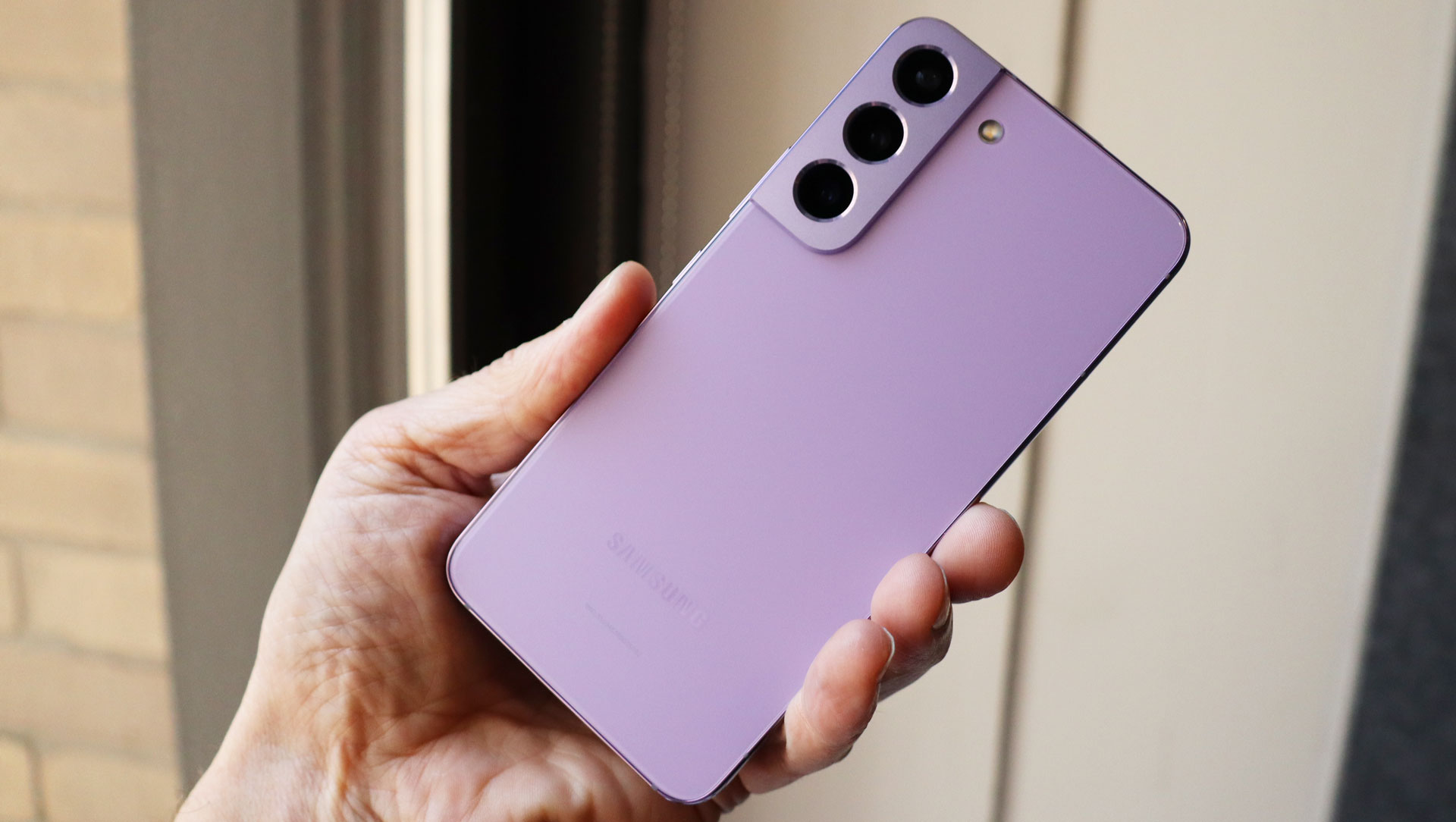
Both phones benefit from IP68 certification, though we’d give the iPhone 14 the nod for the toughness of its display. Apple has used a bespoke ceramic glass screen cover, which is seemingly tougher than the more generic Corning Gorilla Glass Victus+ of the Galaxy S22.
Another key design difference is the handling of the front-facing camera. The iPhone 14 houses it in a display notch that's quite dominant and intrusive, occupying a large slice of the top of the screen. The Galaxy S22 has a more compact punch-hole selfie camera.
In terms of color options, the iPhone 14 comes in Purple, Blue, Midnight, Starlight, and Product Red. The Galaxy S22 gives you more options: Phantom Black, White, Pink Gold, Green, Graphite, Sky Blue, Violet, and Cream, depending on your region.
iPhone 14 vs Samsung Galaxy S22: display
Both of these phones give you a 6.1-inch OLED display, providing rich, vibrant HDR colors. Things differ a little from there, however.
The iPhone 14's display wins on sheer sharpness, with an 1170 x 2532 resolution comparing favorably to the Galaxy S22’s 1080 x 2340 equivalent. It’s not a massive difference, but it ensures that small text looks sharper on the iPhone.
On the other hand, the Galaxy S22's display is much more fluid than its rival. Samsung’s support for a 120Hz refresh rate far outstrips the iPhone 14’s 60Hz.

The Samsung Galaxy S22's screen gets slightly brighter too, with a peak brightness of 1,300 nits compared to the iPhone 14’s 1,200 nits. They’re very close, though.
Samsung has supplied an ultrasonic fingerprint sensor underneath that display, whereas Apple relies wholly on its Face ID system, which is housed within that chunky notch. This is largely a matter of preference – do you want to unlock your phone and authenticate payments with a look or a touch?
iPhone 14 vs Samsung Galaxy S22: cameras
The iPhone 14 gives you a dual 12MP camera setup covering wide and ultra-wide duties. Samsung goes the whole hog with a 50MP wide, a 12MP ultra-wide, and a dedicated 10MP telephoto camera capable of 3x optical zoom.
Numerical differences aside, Apple appears to have the more accomplished main sensor. This is effectively the same main sensor as the iPhone 13 Pro, which captures large 1.9µm pixels, and benefits from a wide-open f/1.5 aperture and an advanced sensor-shift optical image stabilization (OIS) system.
Apple’s new Photonic Engine adds even more low-light punch, while applying the Deep Fusion process earlier in the shot. In short, it’s a low-light beast.
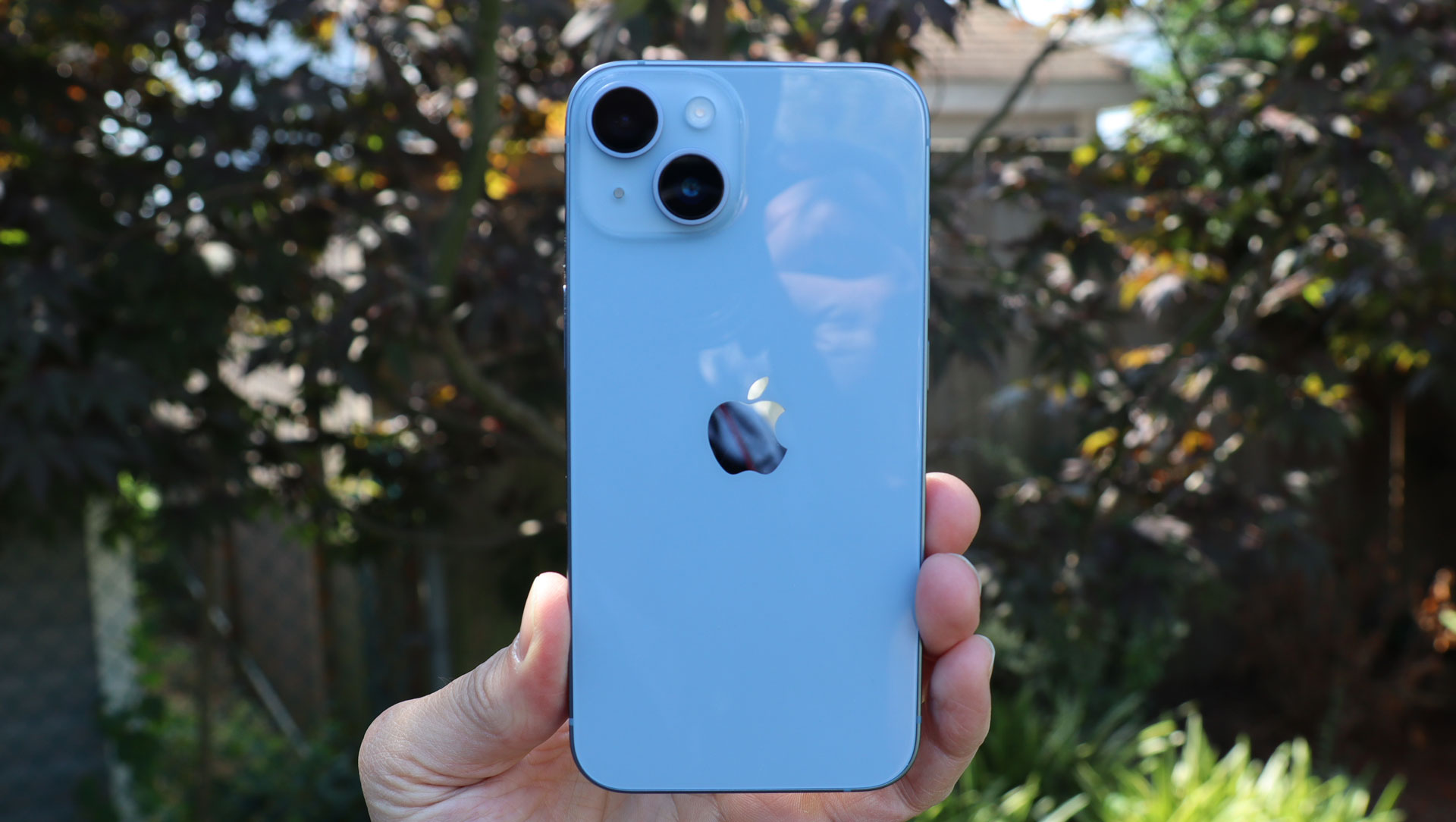
Samsung’s main camera is no dud, with a brand new 50MP wide sensor and an f/1.8 aperture. The company’s punchy color science is the most divisive point here, especially compared to the iPhone’s more natural look.
Both phones give you a 12MP ultra-wide, and capture fine shots with it. The Galaxy S22 has the edge with zoomed shots, of course, with the iPhone 14 needing to crop in on its main sensor.
Apple has improved the iPhone 14’s 12MP front camera, adding autofocus and supplying a wider f/1.9 aperture. Apple says that this results in superior low light focusing on selfie shots, and group shots that can be taken from further away.
The provision of autofocus also enables the iPhone selfie camera to match the Galaxy S22’s for sharpness.
iPhone 14 vs Samsung Galaxy S22: specs and performance
We have to admit, the iPhone 14’s processor proved a bit of a disappointment upon release. It retains the same A15 Bionic that we saw in the previous generation, while the iPhone 14 Pro moves on to the A16 Bionic.
However, the A15 Bionic remains a more capable chip than the Samsung Galaxy S22’s, whichever model you’re talking about. Depending on where you get your Samsung, you’ll get either a Snapdragon 8 Gen 1 or an Exynos 2200 chipset.
Both of these are 4nm chips (vs the A15 Bionic’s less efficient 5nm) of broadly equivalent power, with the off-the-shelf Snapdragon having a slight edge over its bespoke counterpart. But neither can match the iPhone 14’s chip for CPU or GPU output, at least according to our benchmarks.
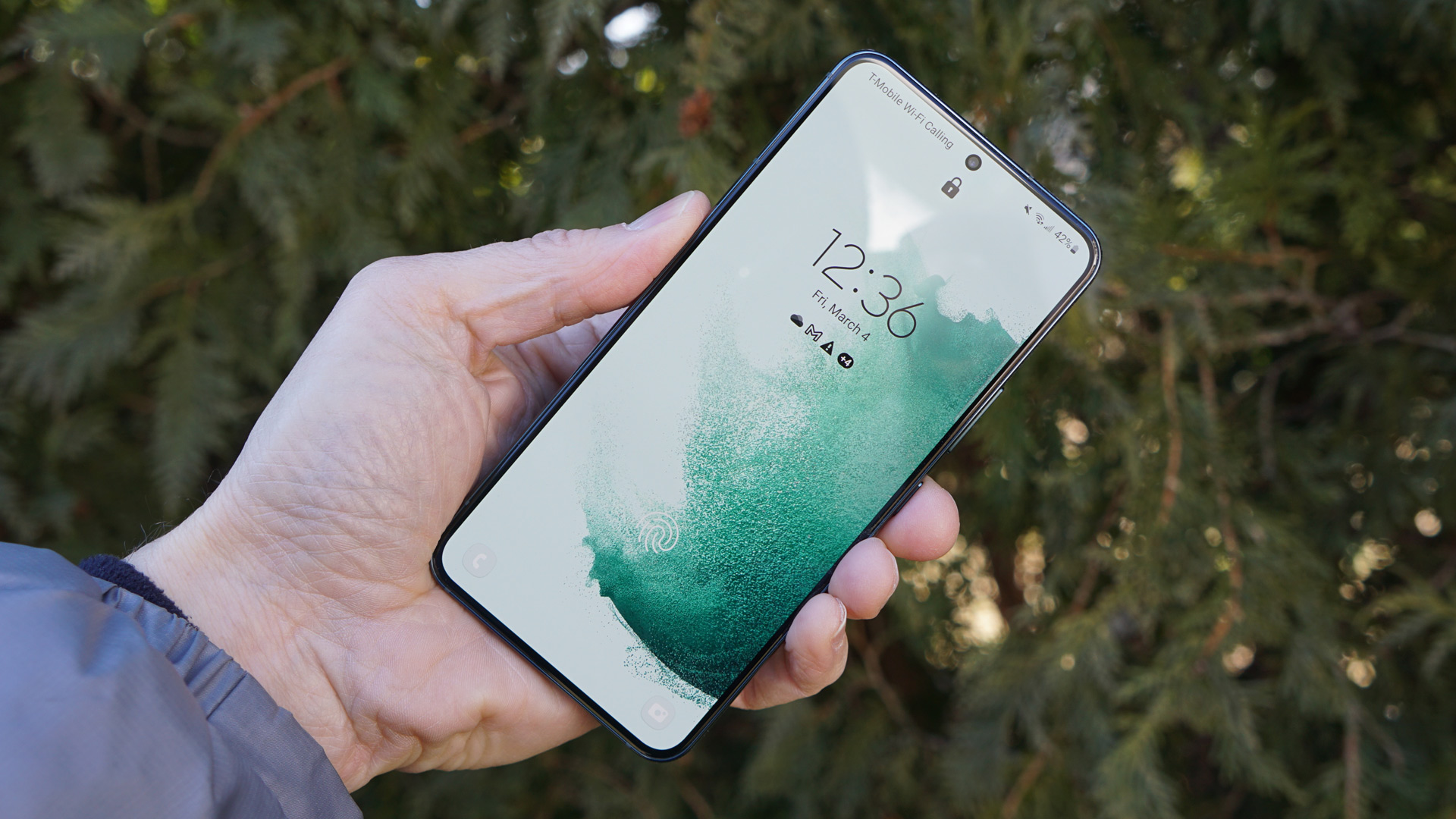
Elsewhere, the iPhone 14 comes with 6GB of RAM to the Galaxy S22’s 8GB. However, the differences between iOS and Android render any direct comparisons pretty pointless.
What matters is that both phones are extremely fast and responsive in the hand, and can handle high-end gaming with ease.
In storage terms, the iPhone 14 gives you 128GB, 256GB and 512GB. The Galaxy S22 only gives you a choice of 128GB or 256GB.
iPhone 14 vs Samsung Galaxy S22: battery
The iPhone 14 comes with a 3,279mAh battery, while the Galaxy S22 supplies a 3,700mAh cell. Again, though, the different ways in which iOS and Android operate renders a direct capacity comparison pointless.
We got roughly 12 hours of battery life from the Samsung Galaxy S22 with varied and almost constant use, while our reviewer reported getting more than a full day’s battery life off a single charge with the iPhone 14.
Neither phone impresses on the charging front. The Galaxy S22 only supports up to 25W wired charging, while the iPhone 14 only supports 20W charging. Neither ships with a charger in the box.
Both phones support Qi wireless charging – 15W for the Samsung, 7.5W for the iPhone. The latter can hit the heady heights of 15W wireless, but only if you invest in a special MagSafe charger.
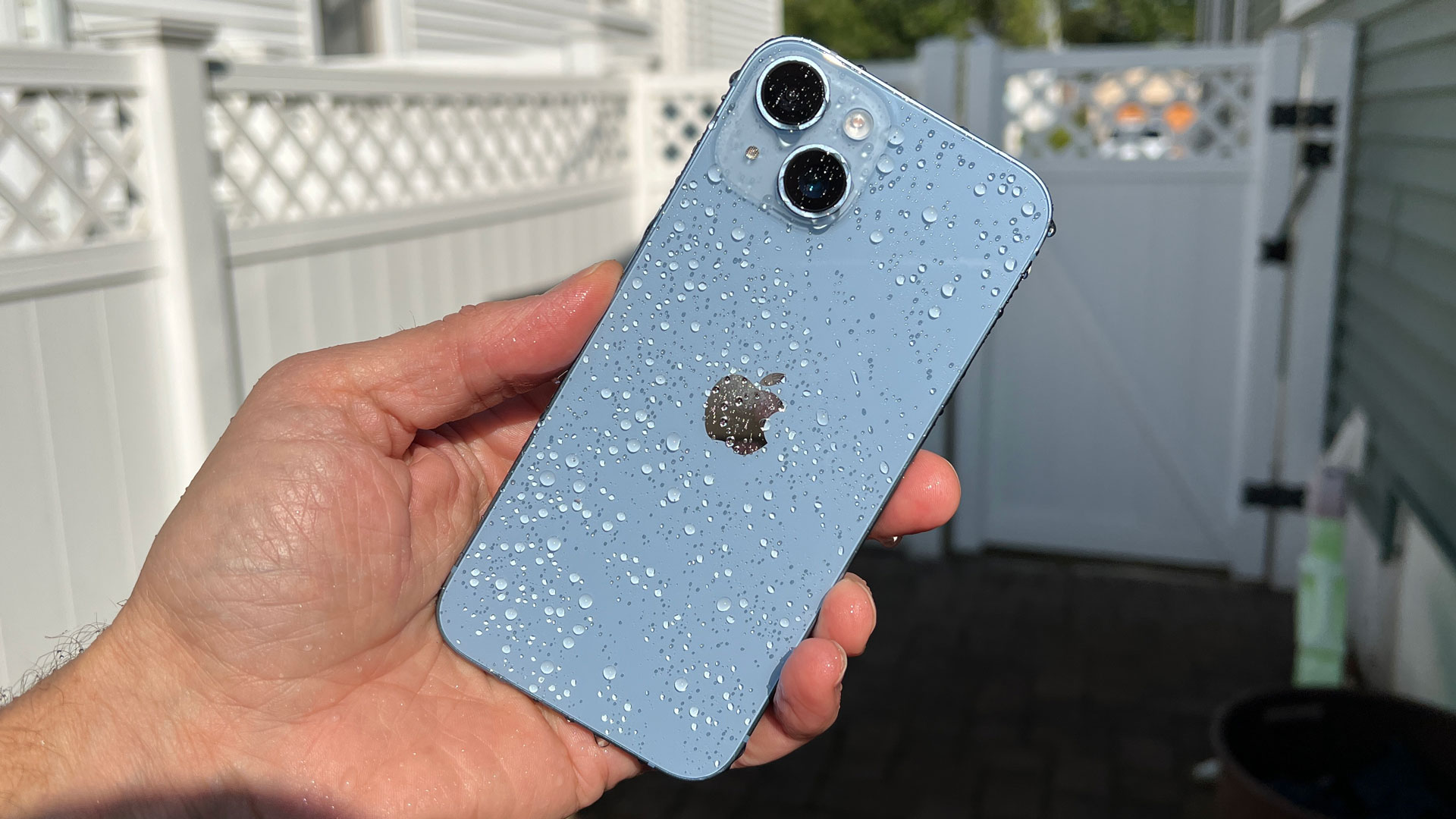
Takeaway
We gave both of these phones 4-star reviews in 2022, which goes to show how evenly matched they are. Both are around the same price, are similar in size and weight, and have 6.1-inch AMOLED displays.
The Galaxy S22 had the more responsive screen, but the iPhone 14's display is sharper. The iPhone 14 also has the edge on power and stamina, and its main camera is more impressive than its counterpart. However, Samsung’s phone gives you a dedicated telephoto camera and doesn't have an intrusive display notch.
Ultimately, both phones are incremental upgrades on their immediate predecessors, which makes both safe – if uninspired – bets. We can’t really call an outright winner here, so it really all comes down to which design (curvy vs angular) and OS (Android vs iOS) you prefer.

Jon is a freelance journalist who has been covering tech since the dawn of the smartphone era. Besides TechRadar, his words and pictures have appeared in The Telegraph, ShortList, Tech Advisor, Trusted Reviews, Expert Reviews, and more. He largely covers consumer technology, with a particular focus on smartphones and tablets. However, he's also been known to dabble in the worlds of entertainment and video games.